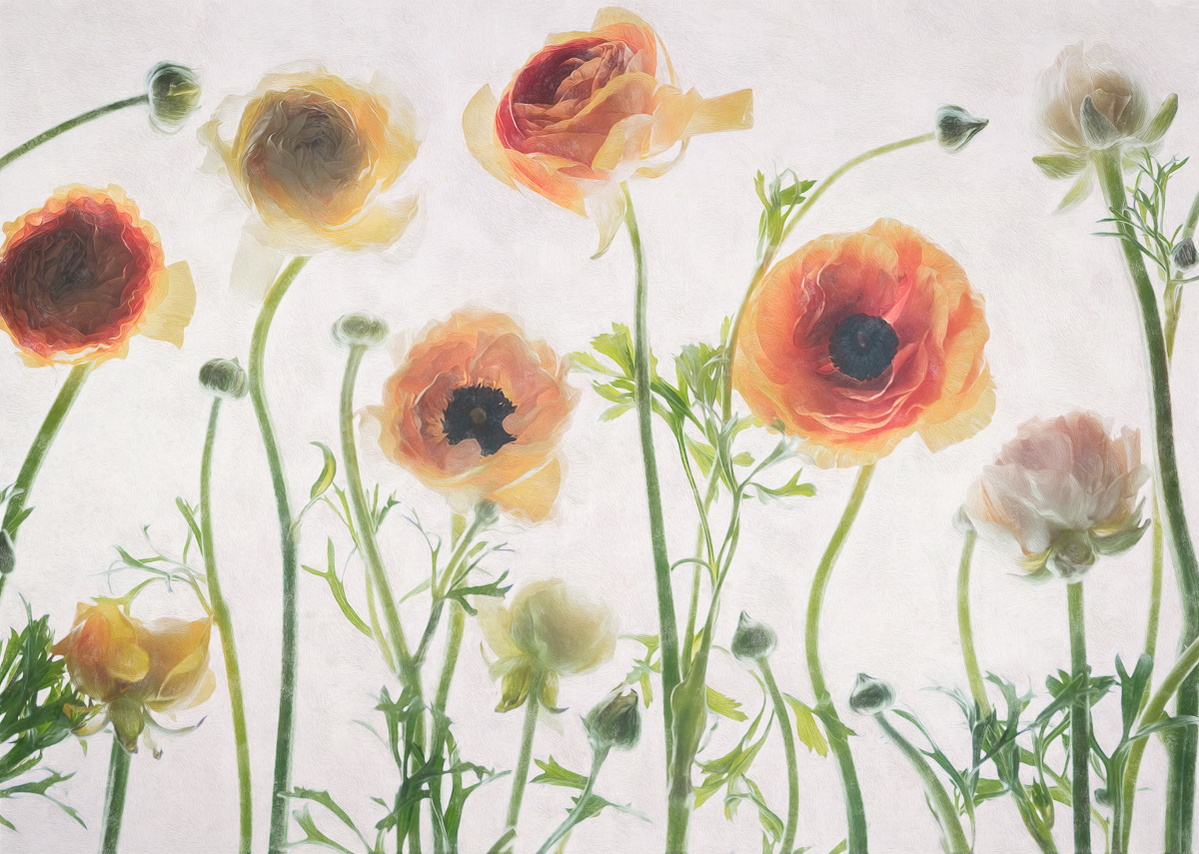“Spring Rose”
March 8, 2021The Ranunculus is considered an almost perfect flower and just about everyone’s favorite. This flower has been a go-to flower for wedding and floral designers for many years. But it became even more popular when the grocery store chain Trader Joe’s started carrying them in stores each spring. Their papery thin, layer upon layer of petals and beautiful colors make them a standout in spring arrangements and cutting gardens.
The word Ranunculus translates to little frog from the Latin words “rana” (meaning frog) and “unculus” (meaning little). The name came from the flowers preferring to grow near bodies of water; in the spring, they were visible along streams—just like little frogs. The flowers were first noted as early as the 13th century in the Holy Land and then introduced in Europe during the 16th century. Ranunculus was part of both Persian and Native American legends. The flowers are tied to old stories of a lovestruck Persian prince, as well as a Native American coyote whose eyes were snatched by an eagle. Native Americans exploited the plants’ medicinal properties and utilized dried Ranunculus in poultices to remove warts and treat muscle pains.
Here are additional fun facts about these little flowers from the magazine Flower Style.
- The glossy-yellow buttercup species, Ranunculus repens, is a great reflector of UV light due to its unique cellular anatomy. Its petals have to mirror flat cells that help bounce backlight. These flowers were commonly used in children’s games, where kids would hold a buttercup stem underneath their chin—if the flower produced a glowing yellow reflection on the skin, that was said to mean that the person liked butter!
- Among some Native American tribes, Ranunculus flowers were known as Coyote Eyes. According to their legends, they received this name from a mythological coyote. To entertain himself, the coyote would toss his eyes up in the air and catch them again. Suddenly, an eagle swooped down and snatched the coyote’s eyes while they were still airborne. Since he was now unable to see, the coyote grabbed two Ranunculus flowers growing in a nearby field and used them as his new eyes.
- The Persians have quite a different story for the origins of Ranunculus. According to their legends, a young Persian prince became enamored with a beautiful nymph so that he would sing to her day and night. In one version of the story, the nymphs were so tired of the prince’s songs that they turned him into a Ranunculus plant. Another version recounts that the prince died of heartbreak when his love was not returned by his beloved nymph. So, in place of his body, a giant Ranunculus flower sprang up from the ground.
- Native Americans used Ranunculus in herbal medicines. Dried plants were formed into poultices that could remove warts and treat muscle and joint pains.
If you are in love with these sweet blooms, consider adding them to your spring garden. The plants are cold-sensitive, so you will need to plan your garden setting to ensure their success. If you live where the temps are mild, you can plant in the fall and protect the plants during any frost. If you live in colder climates or risk freezing, you will want to wait and plant in the spring.
The ranunculus has little octopus-looking corms. They should be soaked for 3 to 4 hours in mild water before planting. They will double in size, and then you can begin to plant. To learn more about how to plan these fun flowers check out this article from Longfield Garden.
I plan to try some this spring and will be sure to post how it works out! Until then, I grab them up at Trader Joe’s as a spring treat to enjoy indoors. The cut flowers will last ten or more days inside. They are gorgeous as single stems in vases or put together with other spring flowers. I hope you can experience these charming, colorful spring blooms this season.
Source: https://www.flower.style/flowers-we-love/ranunculus












